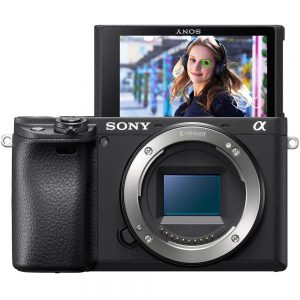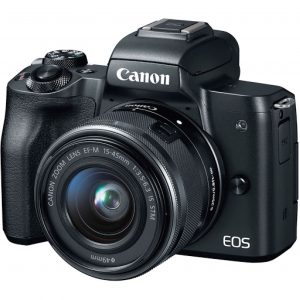The best cameras for vlogging come in all shapes and sizes, depending on the kind of content you want to create, your own particular shooting style and where you see yourself on the vlogging scale, from adventurous thrill-seeker to travel photographer to filmmaker. There are a few essential questions you need to answer – how much versatility you need, what kind of quality you’re looking for, and how much equipment you want to carry.
That said there are several features which you’ll find that all, or most, of the best vlogging cameras have. Regardless of whether you’re new to all of this or a long-established YouTube celebrity, you’ll likely be looking for a camera that is compact enough to take anywhere, but also capable of creating sharp, smooth footage when you need it – in a range of different lighting conditions.
Aside from budget, your personal style of shooting is probably the most important factor to consider. If you’re somebody who is recording footage, ready to upload on the go, you’ll be in need of a camera which has Wi-Fi and Bluetooth connectivity – and an easy-to-use app to go with it. If you’re a walker and talker, cameras with fantastic image stabilization, a front-facing/flip-up screen to help you frame yourself, as well as a mic input, will be high on your list. ICE gives you its top 5 of the line vlogging cameras!
Fujifilm X-S10
A fantastic mirrorless all-rounder that makes perfect sense for vloggers
 Arguably the best all-round mirrorless camera at this price point, the Fujifilm X-S10 is adept at lots of different types of shooting and subject. It’s a great vlogging camera, but if you’re somebody who also wants to shoot stills to supplement your video content, then it’s a great choice too. Inside the X-S10 is the tried-and-tested combination of a 26.1MP X-Trans CMOS 4 sensor and X-Processor 4, which we’ve already seen in the Fujifilm X-T4, but it also has the ability to record uncropped 4K/30p video.
Arguably the best all-round mirrorless camera at this price point, the Fujifilm X-S10 is adept at lots of different types of shooting and subject. It’s a great vlogging camera, but if you’re somebody who also wants to shoot stills to supplement your video content, then it’s a great choice too. Inside the X-S10 is the tried-and-tested combination of a 26.1MP X-Trans CMOS 4 sensor and X-Processor 4, which we’ve already seen in the Fujifilm X-T4, but it also has the ability to record uncropped 4K/30p video.
For vloggers, there’s plenty of other video-friendly features to tempt you, too. For example, if you’re planning to do a lot of handheld video recording, the in-body image stabilization system (IBIS) is a real bonus.
On top of all of that you’ve also got retro styling, a great, comfortable grip and a vari-angle screen that you can flip round to face you – perfect for framing yourself. It’s also available at a pretty wallet-friendly price, especially considering all the features you get for your cash.
Sony A6400
Brilliant for vloggers, the A6400 has 4K video and a front-facing screen
 Not so long ago, any camera with a 180-degree front-facing screen was instantly dismissed as a ‘selfie’ camera, but the rise of blogging, vlogging and Instagram has brought video to the fore, and the A6400’s front-facing screen sets it apart from many of its rivals and makes it a powerful and desirable tool for single-handed video shooters who want to talk directly to the camera.
Not so long ago, any camera with a 180-degree front-facing screen was instantly dismissed as a ‘selfie’ camera, but the rise of blogging, vlogging and Instagram has brought video to the fore, and the A6400’s front-facing screen sets it apart from many of its rivals and makes it a powerful and desirable tool for single-handed video shooters who want to talk directly to the camera.
The A6400 is also a great camera for stills. We’re not so keen on the design, which is largely unchanged since the original A6000 model, but it’s not a deal-breaker given that the Sony is so good at video. It’s not just the 4K video that makes this camera stand out as a vlogging tool, but its state of the art autofocus system, and especially its Eye-AF performance. It’s sold body only (handy if you already have Sony lenses), but if you intend buying it with a kit lens we’d recommend paying the extra for the Sony 18-135mm f/3.5-5.6 lens, which has much longer reach and better optical quality than the standard 16-50mm f/3.5-5.6 PZ lens.
Since the Sony A6400 came out, we’ve had the cheaper A6100 and the more advanced A6600 – but we think the A6400 still hits the vlogging sweet spot between convenience, cost and quality.
Panasonic Lumix G100
Panasonic’s new vlogging camera is pretty good at stills too
 Vloggers and creatives more broadly will enjoy the simplicity of the Lumix G100. It makes it easy to capture high-quality video and stills with its approachable button layout. Even people uninterested in the technicalities of capturing great-looking videos will be able to get results with this camera. There’s an inherent risk of dumbing things down too much when creating a camera for social media creatives, but Panasonic has avoided that pitfall with the Lumix G100. By giving it a decent viewfinder and “proper camera” ergonomics, Panasonic has given the G100 an edge in a highly competitive market. This is a great camera to start with if you’re more interested in vlogging than regular photography – or both!
Vloggers and creatives more broadly will enjoy the simplicity of the Lumix G100. It makes it easy to capture high-quality video and stills with its approachable button layout. Even people uninterested in the technicalities of capturing great-looking videos will be able to get results with this camera. There’s an inherent risk of dumbing things down too much when creating a camera for social media creatives, but Panasonic has avoided that pitfall with the Lumix G100. By giving it a decent viewfinder and “proper camera” ergonomics, Panasonic has given the G100 an edge in a highly competitive market. This is a great camera to start with if you’re more interested in vlogging than regular photography – or both!
Sony ZV-1
The best compact vlogging camera around
 For a long time, the Canon G7 X Mark III was our favorite compact vlogging camera, but it’s just been knocked off its perch by the excellent Sony ZV-1. By combining all of the best bits of Sony’s RX100 series (for example, the RX100 VII’s microphone port and autofocus, plus the RX100 V’s bright 24-70mm f/1.8-2.8 lens) the ZV-1 really nails what most people want from a small vlogging camera. Sony’s latest Real-time tracking and Eye AF are the best around and the ZV-1 also has a huge amount of depth for a compact camera, including a built-in ND filter and profiles like S-Log2 for those who want to embrace color grading. We still think the Olympus OM-D E-M5 Mark III’s stabilization and image quality are better still, but you won’t find a finer pocket vlogging camera than the Sony ZV-1.
For a long time, the Canon G7 X Mark III was our favorite compact vlogging camera, but it’s just been knocked off its perch by the excellent Sony ZV-1. By combining all of the best bits of Sony’s RX100 series (for example, the RX100 VII’s microphone port and autofocus, plus the RX100 V’s bright 24-70mm f/1.8-2.8 lens) the ZV-1 really nails what most people want from a small vlogging camera. Sony’s latest Real-time tracking and Eye AF are the best around and the ZV-1 also has a huge amount of depth for a compact camera, including a built-in ND filter and profiles like S-Log2 for those who want to embrace color grading. We still think the Olympus OM-D E-M5 Mark III’s stabilization and image quality are better still, but you won’t find a finer pocket vlogging camera than the Sony ZV-1.
Canon EOS M50
Soon to be updated, but still a stellar 1080p option
 The incoming Canon EOS M50 Mark II offers several new features for vloggers, including the option to livestream directly to YouTube. But it’s not available worldwide and isn’t a huge upgrade on the EOS M50, which makes this older model a good buy for those who mainly want to shoot in 1080p. This is because the M50 (and M50 Mark II) have a significant 1.6x crop when shooting 4K footage, which means you’ll have a narrow field of view even when filming at a wide focal length.
The incoming Canon EOS M50 Mark II offers several new features for vloggers, including the option to livestream directly to YouTube. But it’s not available worldwide and isn’t a huge upgrade on the EOS M50, which makes this older model a good buy for those who mainly want to shoot in 1080p. This is because the M50 (and M50 Mark II) have a significant 1.6x crop when shooting 4K footage, which means you’ll have a narrow field of view even when filming at a wide focal length.
While we wait for the Mark II, the Mark I remains an excellent vlogging option for those happy to record in 1080p – and it’s now better value than ever. Set aside that crop factor and you get a 24.1MP APS-C CMOS sensor, powered by Canon’s capable DIGIC 8 processor. Sure, the M50 doesn’t offer the advanced video profiles found on premium alternatives, but the key point is that it’s compact and accessible.
With a microphone input, vari-angle touchscreen and range of connectivity options in the mix, the M50 is still a stellar starter cam for budding vloggers.
